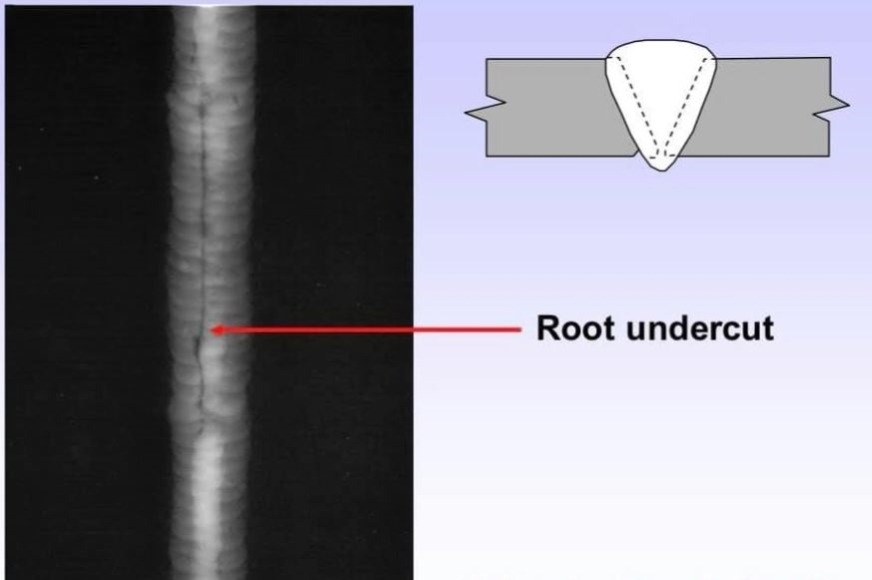Understanding the Art of Welding: How to Stay Clear Of Undercut Welding Issues for Flawless Fabrication Outcomes
Efficiency and accuracy are paramount worldwide of welding, where even the smallest blemish can compromise the structural honesty of a produced piece. One typical challenge that welders face is damaging, a problem that can lead and weaken a weld joint to expensive rework. By recognizing the source of undercut welding and applying efficient strategies to stop it, welders can boost their craft to brand-new levels of quality (Preventing weld undercut). In the pursuit of perfect fabrication outcomes, mastering the art of welding to stay clear of undercut issues is not just a skill yet a necessity for those striving for perfection in their job.
Understanding Undercut Welding

To stop undercut welding, welders should make sure correct welding specifications, such as adjusting the current, voltage, traveling speed, and preserving the right electrode angle. Additionally, utilizing the ideal welding technique for the specific joint setup is crucial. Using weaving motions or backstepping methods can aid ensure appropriate weld steel deposition and lower the probability of undercut development. Regular assessment of welds throughout and after the welding procedure is also crucial to capture any undercut early and make required adjustments to stop additional defects. Preventing weld undercut. By comprehending the root causes of undercut welding and carrying out preventative measures, welders can attain top quality, structurally audio welds.
Sources Of Undercut in Welding
Understanding the factors that contribute to undercut in welding is essential for welders to produce top quality, structurally audio welds. When the weld steel does not properly fill the groove formed in between the base steel and the formerly transferred weld steel, undercutting happens. Several elements can lead to undercut in welding. One usual reason is extreme warmth input. Welding at high temperature levels for extensive periods can cause the base steel melting more than desired, causing undercut. Inadequate welding current or incorrect welding speed can also add to undercut. Inadequate current might not offer adequate heat to melt the base and filler metals adequately, while too much speed can stop correct fusion, causing undercut. Furthermore, improper electrode angles or inaccurate lantern adjustment strategies can create areas of reduced weld metal deposition, advertising undercut. Recognizing these causes and implementing proper welding strategies can help protect against damaging problems, making certain see here resilient and solid welds.
Strategies to avoid Undercutting

To reduce the threat of damaging in welding, welders can utilize critical welding strategies aimed at improving the high quality and honesty of the weld joints. Furthermore, using the proper welding method for the particular joint arrangement, such as weave or stringer beads, can contribute to lowering damaging.
In addition, proper joint preparation, consisting of ensuring clean base materials totally free of pollutants and making use of the appropriate welding consumables, is vital in avoiding undercut problems. Employing back-step welding methods and regulating the weld bead account can additionally help disperse warmth equally and minimize the threat of undercut. Routine inspection of the weld joint during and after welding, as well as applying quality assurance procedures, can aid in addressing and identifying undercutting problems without delay. By implementing these strategies faithfully, welders can achieve perfect fabrication results with minimal undercut problems.
Significance of Appropriate Welding Criteria
Selecting and keeping suitable welding specifications is essential for attaining effective welds with minimal issues. Welding specifications refer to variables such as voltage, current, travel speed, electrode angle, and shielding gas circulation rate that straight affect the welding procedure. These parameters have to be thoroughly changed based on the type of material being bonded, its thickness, and the welding technique employed.
Appropriate welding criteria guarantee the ideal amount of warmth is put on melt the base metals and visite site filler material consistently. If the specifications are established as well high, it can cause too much warm input, triggering spatter, distortion, or burn-through. On the various other hand, if the parameters are too low, insufficient blend, absence of penetration, or undercutting may occur.
Quality Control in Welding Operations

Verdict
In final thought, grasping the art of welding requires a thorough understanding of undercut welding, its reasons, and techniques to avoid it. By guaranteeing appropriate welding criteria and implementing quality guarantee methods, remarkable fabrication results can be attained. It is essential for welders to continually pursue excellence in their welding operations to avoid undercut concerns and create top quality welds.
Undercut welding, a typical defect in welding procedures, takes place when the weld steel doesn't effectively fill up the groove and leaves a groove or depression along the bonded joint.To protect against undercut welding, welders need to guarantee appropriate welding specifications, such as adjusting the existing, voltage, travel rate, and preserving the right electrode angle. Poor welding wrong or current welding rate can also add to damage.To mitigate the danger of undercutting in welding, welders can use tactical welding strategies intended at improving the high quality and integrity of the weld joints.In verdict, grasping the art of welding requires a thorough understanding of undercut welding, its causes, and strategies to stop it.
Comments on “Preventing Weld Undercut: Proven Techniques Every Welder Should Know”